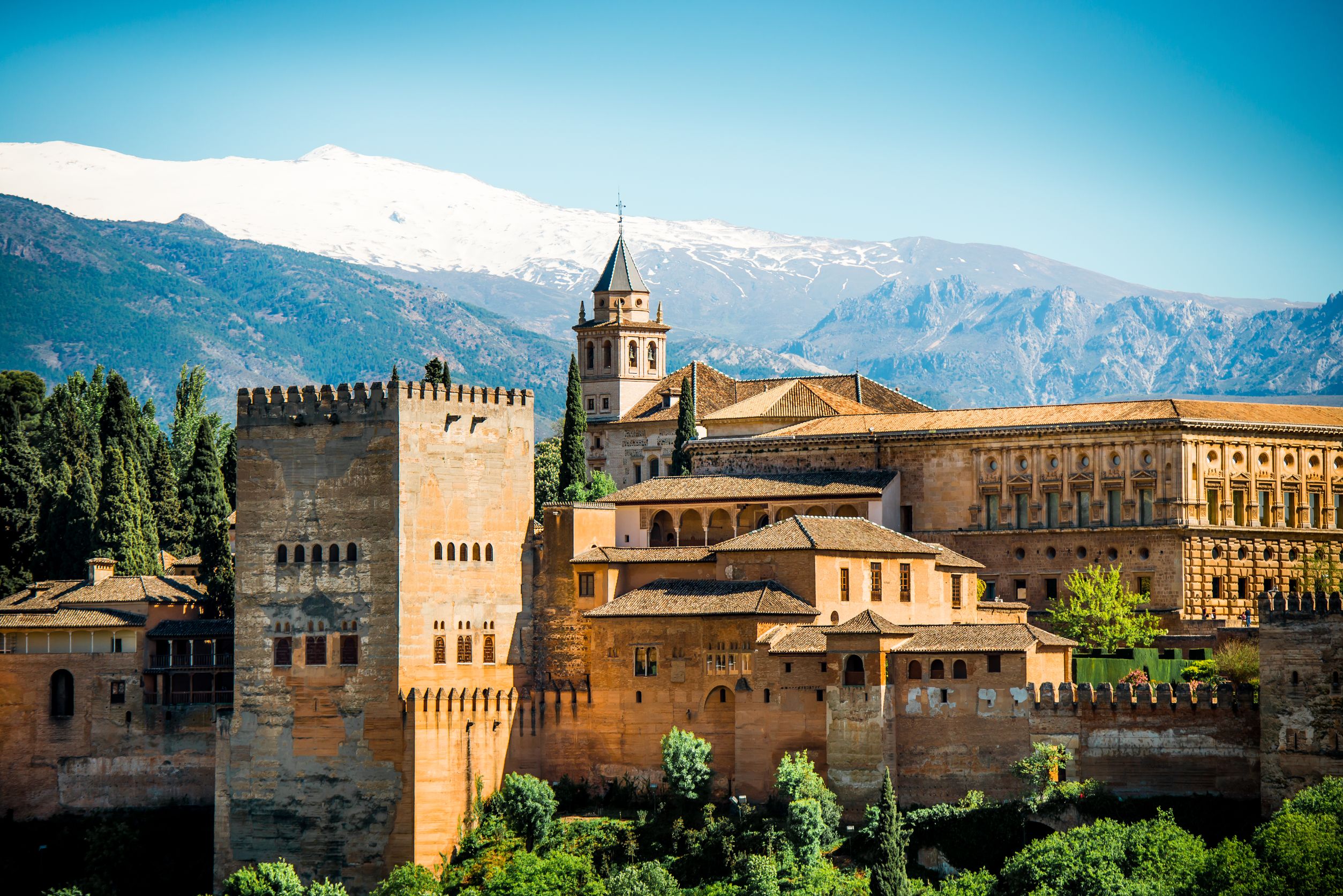
Granada's Alhambra Palace is Europe's favourite tourist destination. In 2015, a total of 2.5 million visitors went to explore this spectacular Arab complex which dates back to the Mediaeval era in Spain – a number that increases year on year and doesn't cease to attract visitors. So busy in fact, that it is advisable to book or buy your entrance tickets in advance. If you still haven't ahd the opportunity to visit this wonder fo the world here is a a complete tour in 360º room by room...so if you fancy a virtual visit just click on the link and if you are interested in some backgound history, keep reading.
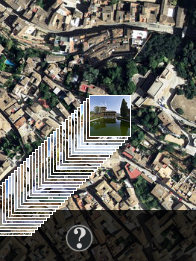
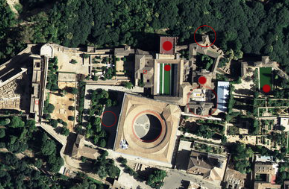
�[When open, click on the red dots or on the photo album in the bottom left hand corner. From there you can choos the room or area you would like to visit.]
The Alhambra and the Generalife of Granada are unique artistic creations and bear exceptional testimony to Muslim Spain of the 16th century. They form an exceptional example of royal Arab residences of the medieval period: neither destroyed nor changed by the alterations of radical restorations, the Alhambra and the Generalife appear to have escaped the vicissitudes of time. Despite the development that followed the Christian conquest, the Albayzín still bears witness to the medieval Moorish settlement, as its urban fabric, architecture and main characteristics (form, materials, colours), were not changed when it was adapted to the Christian way of life, to survive as a remarkable example of a Spanish-Moorish town.
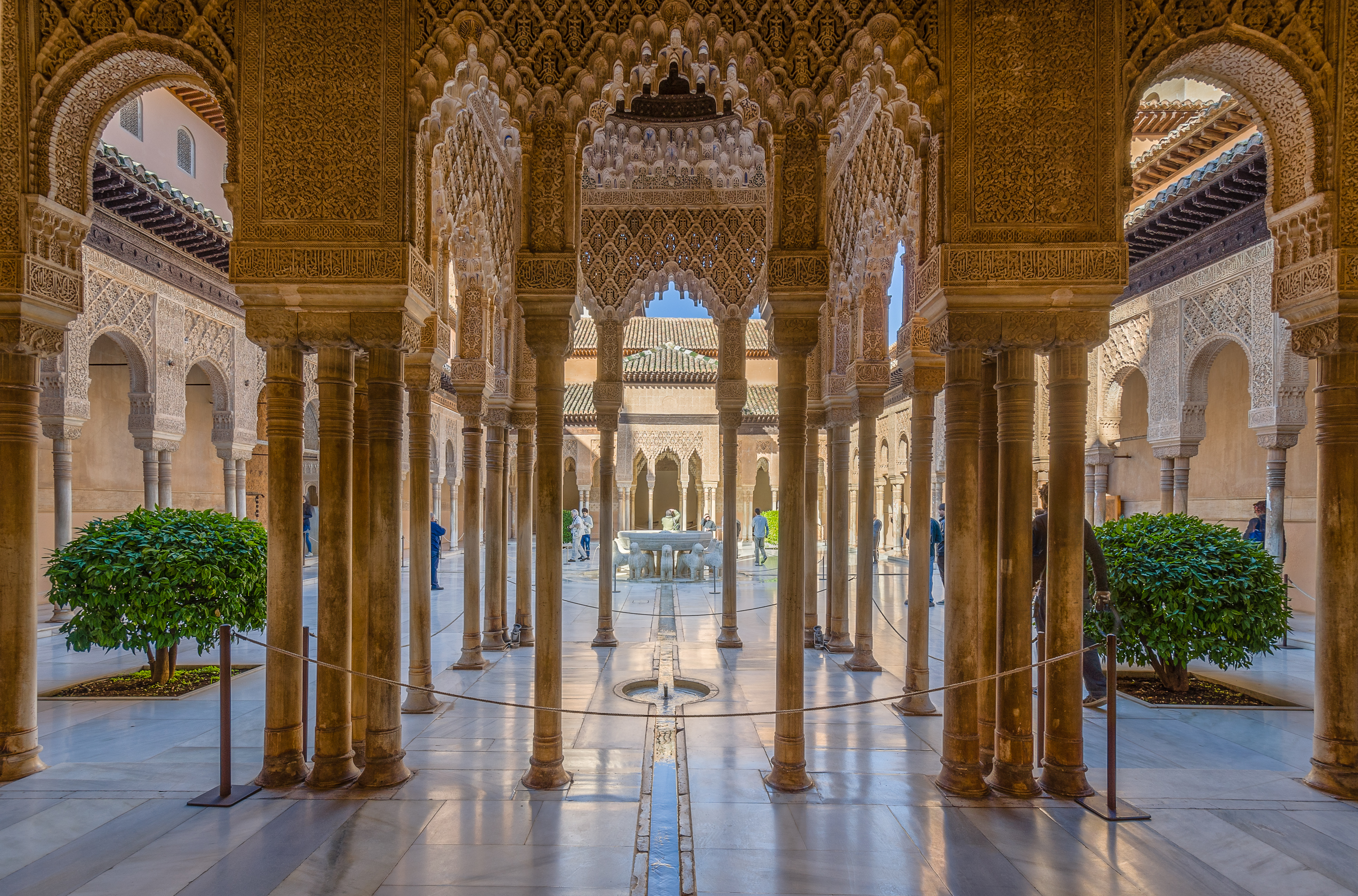
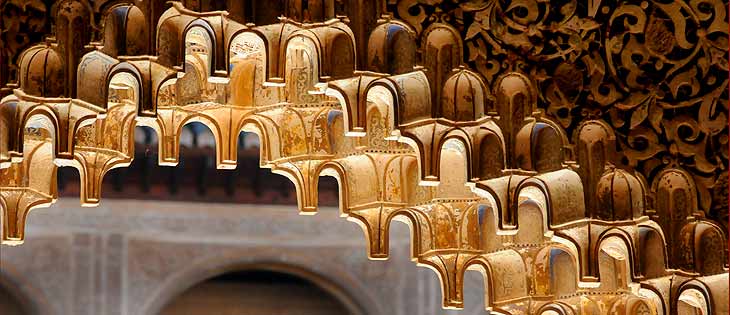
Archaeological excavations have shown that the hill where the Albayzín is now situated has been occupied continuously from as early as the Roman period. In the mid-8th century the region's governor built a fortress where the Plaza de San Nicolás is now located. After the disappearance of the Caliphate of Cordoba (1031), the ephemeral Zirid Emirate of Granada replaced it until 1090: the emirs devoted themselves to the embellishment of their capital, constructed on a site of exceptional beauty. A new defensive enclosure was added and around this a settlement grew up. The town prospered under the Nasrid dynasty and this was reflected by considerable development of the city, but Granada did not become of the important centres of Muslim Spain until much later - in 1238, when Muhammad ibn al Ahmar founded the present Alhambra
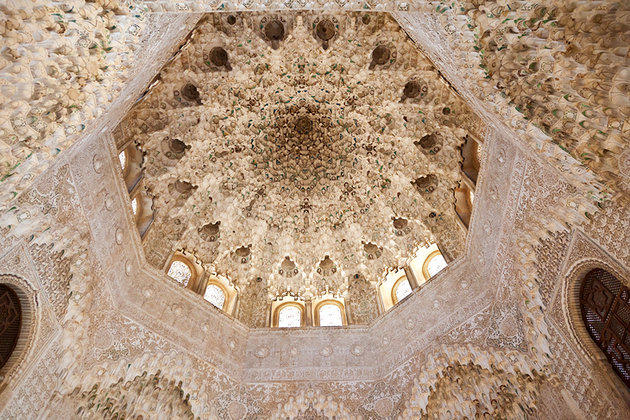
The palace was essentially completed in the 14th century by Yusuf I and his son Mohammed V. It is organized around two rectangular courts, the patio de Los Arrayanes and the Patio de Los Lames, and includes a large number of rooms of a highly refined taste, with marble columns, stalactite cupolas, ornamental works in stucco, gaily coloured azulejos , precious wood inlayed and sculpted, and paintings on leather compete with the richness and the delicacy of the natural decor: the water, still and sparkling in immense basins, flows out into the basins of the fountains (the circular fountain of the Court of Lions), glides through narrow canals, and falls in refreshing cascades or jets of water.
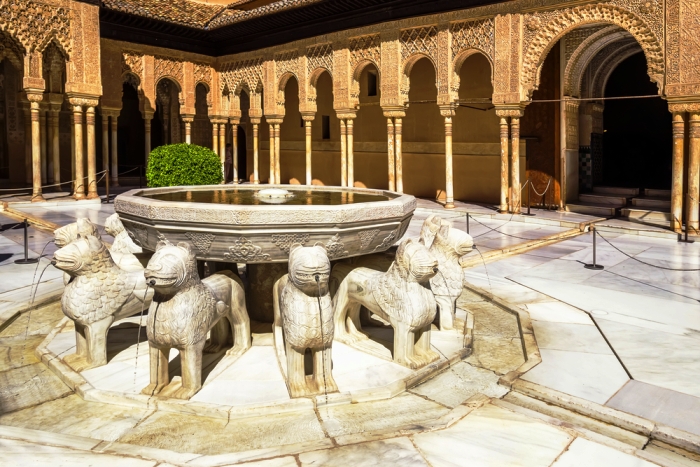
When the Reconquista was completed in 1492, the emigration of most of the Muslim inhabitants and the baptism of those who remained, together with settlement by a substantial Christian population, had an effect on the development of the quarter. The new late Gothic or early Plateresque churches and monasteries harmonized with the existing architecture. Both fortress and residence, the Alhambra (Arabic 'The Red') incorporates palaces, guard room, patios and gardens as well as workshops, shops, baths and mosque (independently of the church of Santa María built in the 16th century on the site of the royal mosque). It is enclosed by a massive fortified wall with towers, extended to the south-west.
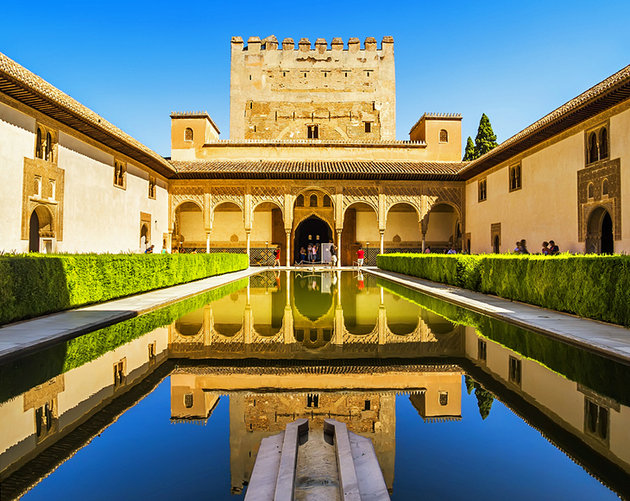
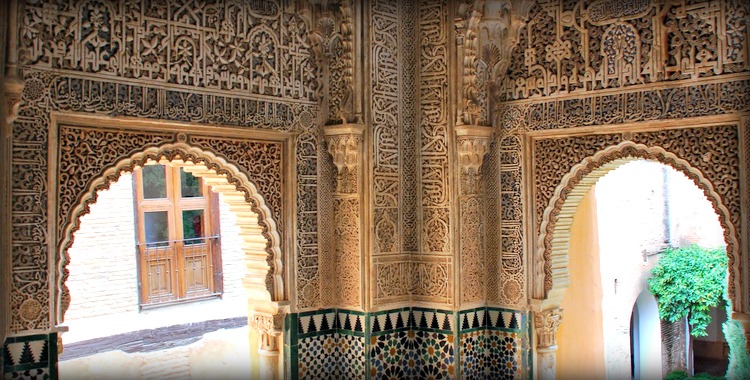
In the 19th century the lower quarters of the town were transformed and lost their artistic qualities. Much of the significance of the Albayzín lies in the medieval town plan with its narrow streets and small squares and in the relatively modest houses in Moorish and Andalusian style that line then. There are, however, some more imposing reminders of its past prosperity. Among them are the Casa de la Reina (the remains of an aristocratic residence), the Corral del Carbón (an ancient caravanserai), and the former hermitage, converted into the church of San Sebastián. After the Reconquista, Los Reyes Catolicos honoured Granada in many ways and endowed it with many religious monuments. Diego de Siloé, who was trained in Toledo and was one of the initiators of the Plateresque style, became one of the most important architects working in Granada. Among his many masterpieces there is the Patio de la Chancillería.
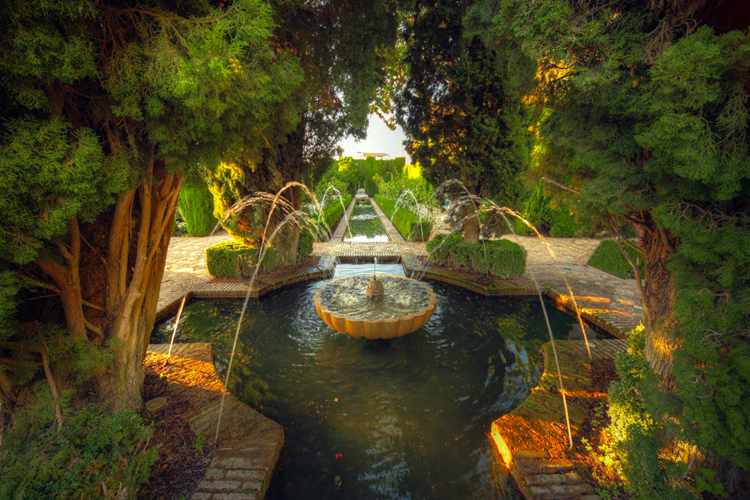
At a short distance to the east of the Alhambra, the enchantment is extended to the gardens of the Generalife, rural residence of the Emirs. The relationship between the architectural and the natural has been reversed here, where gardens and water predominate over the pavilions, summerhouses and living quarters. The massive boxwood trees, rose, carnation and gillyflower bushes, shrubs ranging from willow to cypress, comprise an absolute masterpiece of the art of horticulture by restoring the Koranic image of paradise to the believers.